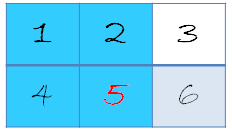池化层max_pool中两种paddding操作
max_pool()中padding参数有两种模式valid和same模式。
Tensorflow的padding和卷积层一样也有padding操作,两种不同的操作输出的结果有区别。
函数原型max_pool(value, ksize, strides, padding, data_format="NHWC", name=None)
这一解释除了tf.nn.max_pool,还适用于tf.nn.conv2d和tf.layer.*下的相关函数
if padding = "SAME":
output_spatial_shape[i] = ceil(input_spatial_shape[i] / strides[i])
if padding = "VALID":
output_spatial_shape[i] = ceil((input_spatial_shape[i] - (window_shape[i] - 1) * dilation_rate[i]) / strides[i])
也就是说:
“VALID” 模式,在剩余行列数小于池化窗口大小时,将最右边和最下面的列或行抛弃,只保留有效值;
“SAME” 模式则是在剩余行列数不足时补充0来满足池化窗口的大小,保持窗口被池化区域相同;
所以输出尺寸不是池化窗口的整数倍时,same模式的输出要比valid的大。
#我们来看看函数的定义
#source code:https://github.com/tensorflow/tensorflow/blob/master/tensorflow/python/ops/nn_ops.py line:2116
@tf_export("nn.max_pool")
def max_pool(value, ksize, strides, padding, data_format="NHWC", name=None):
"""Performs the max pooling on the input.
Args:
value: A 4-D `Tensor` of the format specified by `data_format`.
ksize: A list or tuple of 4 ints. The size of the window for each dimension
of the input tensor.
strides: A list or tuple of 4 ints. The stride of the sliding window for
each dimension of the input tensor.
padding: A string, either `'VALID'` or `'SAME'`. The padding algorithm.
See the "returns" section of `tf.nn.convolution` for details.
data_format: A string. 'NHWC', 'NCHW' and 'NCHW_VECT_C' are supported.
name: Optional name for the operation.
Returns:
A `Tensor` of format specified by `data_format`.
The max pooled output tensor.
"""
with ops.name_scope(name, "MaxPool", [value]) as name:
value = ops.convert_to_tensor(value, name="input")
return gen_nn_ops.max_pool(
value,
ksize=ksize,
strides=strides,
padding=padding,
data_format=data_format,
name=name)
#其中pool()函数 padding的代码如下所示
#dilation_rate 默认为1的序列Defaults to [1]*N
#nn_ops.py line876
If padding = "SAME":
output_spatial_shape[i] = ceil(input_spatial_shape[i] / strides[i])
#'same'方法输出尺寸直接为 input_size/strides_size
If padding = "VALID":
output_spatial_shape[i] =
ceil((input_spatial_shape[i] - (window_shape[i] - 1) * dilation_rate[i])
/ strides[i]).
#'valid'方法输出尺寸为 [input_size-(pooling_win_size-1)*1]/stride_size
用例子解释一下:
1.
#"VALID" = without padding:
inputs: 1 2 3 4 5 6 7 8 9 10 11 (12 13)
|________________| dropped
|_________________|
#"SAME" = with zero padding:
pad| |pad
inputs: 0 |1 2 3 4 5 6 7 8 9 10 11 12 13|0 0
|________________|
|_________________|
|________________|
2.
x = tf.constant([[1., 2., 3.],
[4., 5., 6.]])
x = tf.reshape(x, [1, 2, 3, 1]) #先转为张量输入
valid_pad = tf.nn.max_pool(x, [1, 2, 2, 1], [1, 2, 2, 1], padding='VALID')
same_pad = tf.nn.max_pool(x, [1, 2, 2, 1], [1, 2, 2, 1], padding='SAME')
valid_pad.get_shape() == [1, 1, 1, 1] # valid_pad is [5.] #3,6那一列被丢掉了
|1 2 ...3|
|4 5 ...6|
same_pad.get_shape() == [1, 1, 2, 1] # same_pad is [5., 6.] #加上了第四列,第二个窗口的max是6
|1 2 3 0|
|4 5 6 0| ->|5,6|
ref:
api:https://www.tensorflow.org/api_docs/python/tf/nn/max_pool
blog:https://blog.csdn.net/accumulate_zhang/article/details/78359856
blog:https://blog.csdn.net/wuzqChom/article/details/74785643
stackflow:https://stackoverflow.com/questions/37674306/what-is-the-difference-between-same-and-valid-padding-in-tf-nn-max-pool-of-t
code:https://github.com/tensorflow/tensorflow/blob/master/tensorflow/python/ops/nn_ops.py
gen_nn_ops.max_pool如何得到:
build:https://github.com/tensorflow/tensorflow/blob/master/tensorflow/python/BUILD#L273
gen_nn.ops:https://stackoverflow.com/questions/41147734/looking-for-source-code-of-from-gen-nn-ops-in-tensorflow
------------------------------------------
原文:https://blog.csdn.net/u014636245/article/details/83618447

